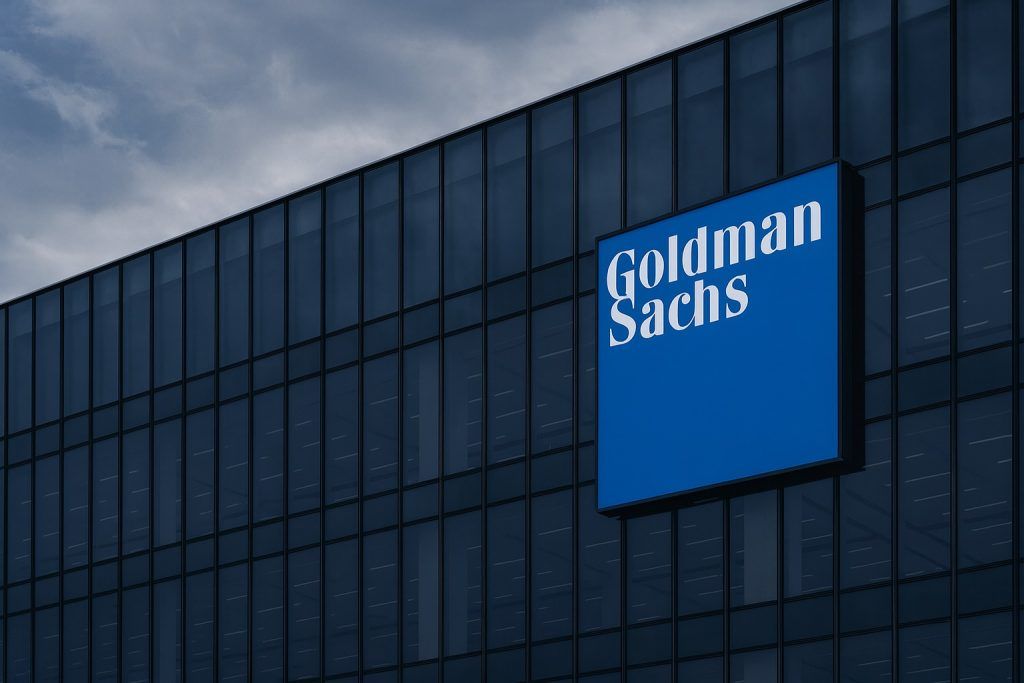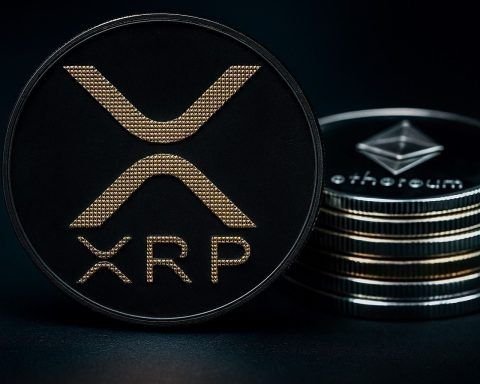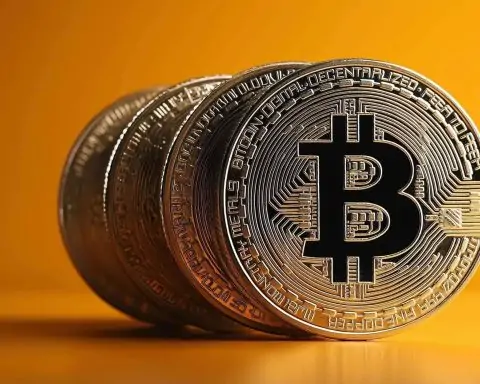- Binance on Oct 13, 2025 unveiled Euler (EUL) as the 51st project on its HODLer Airdrops program [1]. A total of 543,657 EUL (2% of supply) will be air-dropped retroactively to users who staked BNB in Binance Earn from Oct 4–6 [2] [3].
- Euler Finance’s native token EUL began trading Oct 13, 2025 at 14:30 UTC against USDT, USDC, BNB, FDUSD and TRY [4], with deposits open at 10:30 UTC. Binance flagged EUL with a “Seed Tag” (for low liquidity/volatility) and will quiz traders every 90 days about its risks [5].
- Euler (EUL) is a modular DeFi “super app” for lending, borrowing, trading and custom vaults [6] [7]. Launched by Euler Labs (co-founded by Michael Bentley, Doug Hoyte, etc.), it lets users “lend and borrow anything” with any crypto as collateral [8] [9]. EUL is an ERC‑20 token (also on BNB‑Smart, Base, Arbitrum) used for governance, rewards, and fee auctions.
- The airdrop rewards were carefully limited: no single user can earn more than 4× the average share of EUL, and only genuine staked BNB counts (borrowed BNB or loaned BNB were excluded) [10]. Users snapped screenshots of free EUL tokens landing in their accounts, calling it “free money for being loyal” on social media [11].
- Euler’s EUL listing follows a dramatic week in crypto. On Oct 10–11 a geopolitical shock (Trump’s tariff tweet) triggered a $19–20 billion liquidation cascade [12]: Bitcoin plunged ~10% to ~$102K (from ~$125K highs) [13] and Ethereum fell ~20%. Markets then partially rebounded (BTC ~$112K by Oct 12) [14]. By Oct 14 BTC traded ~$111K and ETH ~$4,100 [15] [16], as investors weighed macro cues.
- In the broader market, BNB (Binance Coin) is down ~7–10% on the week (around $1,200) [17] after the crash, and crypto equities slid (Coinbase COIN -8% to ~$357 [18]). However, many experts see long-term upside: e.g. Bernstein still targets $200K Bitcoin by 2026 [19], while Standard Chartered pegs it at ~$135K if macro remains supportive [20]. Analysts note “October is historically strong” for BTC [21], so some expect a rebound up to ~$125K if history holds.
- On the regulatory front, the U.S. is set to fast-track crypto ETFs: new SEC rules (Sept 2025) slash ETF approval time, paving the way for dozens of altcoin funds [22]. A Fed conference on Oct 21 will even discuss crypto/stablecoins alongside AI [23] – underscoring how digital assets are entering the mainstream.
Binance’s Surprise EUL Airdrop Event
On Oct 13, 2025 Binance shocked the crypto community by announcing a retroactive airdrop of Euler (EUL) tokens to loyal BNB holders [24] [25]. The official Binance support announcement (51st “HODLer Airdrops” project) described Euler (EUL) as a “DeFi Super App” combining lending, trading, custom markets and deep liquidity [26]. Users who had subscribed their BNB to Binance’s Simple Earn (Flexible or Locked) or On-Chain Yields products between Oct 4–6 became eligible. Using random hourly snapshots of balances, Binance will deliver 543,657 EUL tokens (2% of EUL’s 27.18M supply) into users’ spot wallets [27] [28].
Importantly, holding caps were put in place: no individual can earn more than 4× the average reward, and only BNB that was truly staked/locked qualified [29]. Large whales and borrowed funds were limited so that ordinary HODLers share the bounty. Binance’s portal explained that rewards “will be distributed to users’ Spot Accounts at least 1 hour before trading starts” [30]. Indeed, Binance opened EUL deposits at 10:30 UTC on Oct 13 and began trading at 14:30 UTC [31]. Trading pairs include major stablecoins and fiat (USDT, USDC, BNB, FDUSD, TRY) – a rare fiat pairing for a token’s debut [32].
Notably, Binance attached its “Seed” tag to EUL [33]. This designation warns traders that EUL may have lower liquidity and higher volatility, and requires them to complete knowledge quizzes before and during trading. In effect, Binance is saying: “trade carefully”. Once listed, Binance removed EUL from its experimental “Alpha” market, although early EUL traders could still sell on Alpha after the spot listing [34].
What Is Euler (EUL)? – The DeFi Super-App
Euler Finance is not a household name, but it has been quietly developing an ambitious DeFi ecosystem. As its website proclaims, Euler is a “Lending Super App” [35]. In practice it is a modular platform (on Ethereum and other chains) that lets users create and deploy their own lending vaults, lend/borrow any asset, and even swap tokens and vault positions seamlessly [36] [37]. Unlike vanilla lending protocols, Euler supports customizable risk parameters, any collateral asset, and even secondary markets. In short, it aims to “unify lending and trading of any asset as collateral” [38].
EUL is the native governance token of Euler Finance. It is used to vote on protocol changes, to distribute platform fees, and for user rewards. It launched with ~27.18 million tokens total (all pre-mined). Currently about 73% (~19.81M) are circulating, per Binance [39]. The token saw an all-time high near $15.81 in July 2025 (Rank #361 by market cap) [40]. Coinbase added EUL to its platform in August, giving it some exposure [41].
Euler Labs – the team behind the protocol – has notable backers. According to its site, it was audited (Cantina audit with $7.5M bug bounty [42]) and backed by Wintermute Ventures, among others [43]. The co-founders (Michael Bentley, Doug Hoyte, Jack Prior) previously worked on DeFi infrastructure. Euler even recently rolled out EulerSwap (a DEX with built-in lending) and vault-sharing features. The ecosystem has also survived adversity: in March 2023 Euler suffered a $200M flash-loan exploit, but the attacker (dubbed “Jacob”) returned most of the stolen funds after negotiations [44] [45]. This episode (and the Binance listing) suggests confidence that Euler’s tech is robust.
Airdrop Mechanics and Community Response
The Binance HODLer Airdrop program is designed to reward loyalty. By scanning past BNB staking behavior, Binance effectively said “thank you” with tokens of promising projects. Blockchain Magazine explains that this retroactive approach is novel – users got paid for actions already taken, without new tasks [46]. This style of surprise reward (“retro drop”) has become trendy in DeFi. For many, staking BNB suddenly feels exciting: as one wag put it, “If you sleep with BNB, it may kiss you in your dreams with random crypto airdrops” (paraphrased).
Social media lit up on Oct 13–14 with screenshots of Binance accounts showing +EUL balances in the dozens or hundreds of dollars. People called the event “one of the most exciting promotions Binance has done” [47] and praised the simplicity (no new signups or trading required). Euler Labs itself cheekily tweeted about it (“Token Giveaway… Potential Binance listing soon! – exclusive airdrop!” [48]).
That said, the airdrop also drew a few grumbles. Due to U.S. and UK restrictions, Americans and some other nationalities were ineligible for the airdrop. Some international users complained it felt unfair that those markets couldn’t participate [49]. Critics also questioned whether EUL will hold value or just be quick flip money. (After the hype, the token price did spike ~11% and then settled, according to CoinMarketCap data – as DailyHodl noted, EUL was ~$10.01 at time of writing [50].) Most observers, however, praised Binance’s savvy in this campaign: it targeted everyday BNB stakers, not just big traders. As Blockchain Magazine sums up: “Binance’s execution of this event shows strong coordination and a focus on rewarding everyday participants, not just high-volume traders” [51].
The airdrop’s summary table (BlockChainMag) neatly captures the terms: 543,657 EUL to be distributed (2% of supply) to anyone who locked BNB Oct 4–6 [52]. Another ~67,957 EUL go to post-listing marketing, and 271,828 for a future campaign (in 6 months). These allocations hint that Euler Labs has bigger plans (leaving a marketing war chest).
Market Reaction: Crypto Rollercoaster in October
The EUL news arrived amid a turbulent crypto market week. In early October, Bitcoin had been surging: a markets.financialcontent.com report (Oct 8) described a “crypto euphoria” as BTC hit an all-time high of ~$126,500 [53] fueled by massive ETF inflows (>$5 billion in a week [54]). Ethereum and altcoins likewise climbed (ETH flirted with $4,680; BNB jumped 22% in a week [55]). Total crypto market cap briefly topped $4.3 trillion [56]. Analysts were giddy: BlackRock’s IBIT ETF saw record inflows, and industry veterans declared Bitcoin to be maturing as a digital gold [57] [58].
Then came Oct 10. A tweet by former President Trump threatening “massive tariffs” on China plunged markets into chaos. Over $19–20 billion in crypto leveraged bets liquidated in 24 hours [59]. Bitcoin flash-crashed ~10% in minutes (dropping from ~$122K to ~$102K on some exchanges) [60] [61]. Ethereum fell ~21% from ~$4,390 to about $3,460 in the day [62]. Other altcoins were brutalized (e.g. XRP down ~30%, Doge ~39% [63]). This was one of the fastest market sell-offs ever.
The crash triggered exchange meltdowns. Many centralized exchanges (including Binance) faced outages as trading volumes spiked [64]. Binance’s co-founder Yi He publicly acknowledged service disruptions and promised to compensate users who lost funds “due solely to its systems failing” during the crash [65]. (By contrast, DeFi protocols proved resilient: Uniswap saw record $10B daily volume without downtime, and Aave withstood ~$180M liquidations, its founder calling it “the largest stress test” yet [66].)
After the dust settled, by Oct 12 bitcoin had partly rebounded to ~$111–112K [67]. As one analyst put it, the market “essentially stabilized” shortly after the shock [68]. Cybersecurity analyst Joshua Duckett of CryptoForensic told Fox Business that by Sunday, “Right now, we’re kind of in a rebound-to-stable position. Tomorrow is a new day.” [69]. Indeed, the sell-off “shook out weak hands,” and some opportunists began buying the dip. Crypto strategist Samson Mow noted there were still “21 days left in ‘Uptober’,” suggesting this might be a short pause rather than an end to the rally [70].
As of Oct 14, prices remained volatile. CryptoNews reported BTC around $113,144 and ETH ~$4,104 [71] [72] – roughly 2–3% down on the day as whales piled into shorts. The Fear & Greed Index swung from greed to fear overnight [73] but was trending back up. In traditional markets, crypto stocks mirrored the fall: Coinbase (COIN) fell about 8% (to ~$357) on Oct 10 [74], and blockchain mining shares slipped. Only a few sectors thrived (e.g. GameFi tokens +5–6%).
Expert Commentary and Forecasts
Analysts and industry veterans gave mixed takes. Long-term bulls remained optimistic: several pointed to historical October strength. Economist Timothy Peterson reminded that “since 2013 October’s average BTC gain is ~20%” [75], so a sharp rebound is not out of the question. Bernstein Research reiterated a $200,000 Bitcoin target by early 2026 [76], citing surging institutional inflows. Standard Chartered even suggested Bitcoin could “soon reach $135,000” if U.S. fiscal issues keep interest rates high [77]. On-chain analysts and market newsletters are publishing year-end targets in the six figures, betting this is a healthy pullback in a larger bull cycle.
Other voices were more cautious. CoinDesk’s market team warned “all bets are off if U.S.–China tensions worsen” [78]. Crypto investor Ruslan Lienkha noted a “lack of new catalysts” as a headwind [79]. Notably, billionaire Ray Dalio advised holding ~15% of one’s portfolio in gold or other safe-havens during such turmoil [80]. Even Bitcoin maximalists like Robert Kiyosaki have warned that a large bubble could still end in a collapse, possibly 50% down from peak [81].
On the micro level, Euler’s co-founder Michael Bentley was publicly gleeful about the absence of centralized halts. He quipped on social media (via TS2 News) that during the crash “No emergency circuit breakers. No regulatory interventions. Just free markets and code.”. This highlights a belief in DeFi’s resilience (Bentley’s Euler absorbed the volatility without downtime).
Price-wise, EUL itself jumped with the news. It traded around $8–10 on Binance right after listing (versus roughly $6–7 before listing). Early reports say EUL spiked about 30% in the first day of trading. Analysts see two drivers: the hype of the airdrop and the fact that listing on Binance will likely expand Euler’s user base. Some technical forecasts (from data sites) remain modest – projecting only single-digit gains – but sentiments on crypto forums range from “patience” to “pump it to the moon.” Given the general bull market attitude, some speculators are placing EUL targets in the teens. Still, others caution that EUL’s future price will depend on Euler’s actual performance (user adoption, revenue from lending fees, etc.).
Broader Crypto Trends and Outlook
The EUL news is part of several trends. First, loyalty rewards programs: Binance’s retroactive airdrops (this was the 51st) are muscling into the space of yield and rewards. By tying perks to BNB staking, Binance encourages holding BNB – which itself just fell to ~$1,190 (–9% in 24h on one report) [82]. A strong BNB ecosystem helps Binance’s market position. We may see other exchanges try similar surprises.
Second, the regulatory/ETF landscape: The US SEC’s new crypto ETF rules (Sept 2025) mean dozens of new funds are on the horizon [83]. Many filings (Solana, XRP ETFs) are expected to launch soon. This institutional tailwind was already pushing prices up in early Oct (see BlackRock, Grayscale inflows). Meanwhile, central banks are warming to crypto topics – the Fed’s Oct 21 “Payments Innovation” conference will discuss stablecoins, AI and DeFi [84]. In Europe, regulators continue to draft crypto legislation. All told, the environment for crypto investment seems increasingly friendly, albeit with caution.
Forecast and Analysis: In the immediate term (next few days/weeks), markets will likely consolidate. Bitcoin needs to reclaim $120K+ to resume the rally [85]. If it does, altcoins (including EUL) could re-test their highs. If not, we could see a sideways or slow bleed as traders wait for clarity. Seasonal patterns and ETF inflows argue for bullish bias into year-end. TechStock²’s latest commentary noted that “history suggests surges often follow crashes” [86].
For Euler specifically, being on Binance is a big visibility boost. If Euler’s protocol gains traction (e.g. more assets lent, higher TVL), EUL’s utility value will grow. Some analysts now include EUL in their DeFi watchlists. Given Binance gave out 543K tokens (worth ~$5–6M at listing), the airdrop alone has locked in a floor of sorts: those tokens are now in users’ hands, and any rational holder wants EUL’s value to at least cover the opportunity cost of staking BNB.
In summary, Binance’s surprise EUL airdrop has lit up social chatter and sent Euler’s native token into the spotlight. It rewards BNB stakers and touts decentralized finance as a reward for loyalty. Coming on the heels of an extreme market swing, it exemplifies crypto’s volatility – and its unpredictably fun promotions. As one TS2 analyst put it, the crash was a “stress test” for DeFi, and Euler’s listing could be seen as part of DeFi’s redemption arc. The coming weeks will show whether EUL can keep soaring or fade back – but for now, Binance has once again shown it can move markets and keep even veteran traders on their toes.
Sources: Binance official blog [87] [88]; DailyHodl [89]; Blockchain Magazine [90] [91]; TS2 TechStock² analysis [92] [93]; CryptoNews market summary [94] [95]; Reuters and FoxBusiness via TS2 [96] [97]; Euler Finance site [98]; Euler hack news [99] [100]; Reuters on ETFs [101], Fed press release [102]. (All data as of mid-Oct 2025.)
References
1. www.binance.com, 2. www.binance.com, 3. blockchainmagazine.net, 4. www.binance.com, 5. dailyhodl.com, 6. www.binance.com, 7. blockchainmagazine.net, 8. www.euler.finance, 9. dailyhodl.com, 10. blockchainmagazine.net, 11. blockchainmagazine.net, 12. ts2.tech, 13. ts2.tech, 14. ts2.tech, 15. cryptonews.com, 16. cryptonews.com, 17. www.binance.com, 18. ts2.tech, 19. ts2.tech, 20. ts2.tech, 21. ts2.tech, 22. www.reuters.com, 23. www.federalreserve.gov, 24. www.binance.com, 25. blockchainmagazine.net, 26. www.binance.com, 27. www.binance.com, 28. blockchainmagazine.net, 29. blockchainmagazine.net, 30. www.binance.com, 31. www.binance.com, 32. www.binance.com, 33. dailyhodl.com, 34. www.binance.com, 35. www.euler.finance, 36. www.euler.finance, 37. www.euler.finance, 38. www.binance.com, 39. www.binance.com, 40. dailyhodl.com, 41. dailyhodl.com, 42. www.euler.finance, 43. www.euler.finance, 44. www.coindesk.com, 45. www.coindesk.com, 46. blockchainmagazine.net, 47. blockchainmagazine.net, 48. blockchainmagazine.net, 49. blockchainmagazine.net, 50. dailyhodl.com, 51. blockchainmagazine.net, 52. blockchainmagazine.net, 53. markets.financialcontent.com, 54. markets.financialcontent.com, 55. markets.financialcontent.com, 56. markets.financialcontent.com, 57. markets.financialcontent.com, 58. markets.financialcontent.com, 59. ts2.tech, 60. ts2.tech, 61. ts2.tech, 62. ts2.tech, 63. ts2.tech, 64. ts2.tech, 65. ts2.tech, 66. ts2.tech, 67. ts2.tech, 68. ts2.tech, 69. ts2.tech, 70. ts2.tech, 71. cryptonews.com, 72. cryptonews.com, 73. ts2.tech, 74. ts2.tech, 75. ts2.tech, 76. ts2.tech, 77. ts2.tech, 78. ts2.tech, 79. ts2.tech, 80. ts2.tech, 81. ts2.tech, 82. www.binance.com, 83. www.reuters.com, 84. www.federalreserve.gov, 85. ts2.tech, 86. ts2.tech, 87. www.binance.com, 88. www.binance.com, 89. dailyhodl.com, 90. blockchainmagazine.net, 91. blockchainmagazine.net, 92. ts2.tech, 93. ts2.tech, 94. cryptonews.com, 95. cryptonews.com, 96. ts2.tech, 97. ts2.tech, 98. www.euler.finance, 99. www.coindesk.com, 100. www.coindesk.com, 101. www.reuters.com, 102. www.federalreserve.gov










